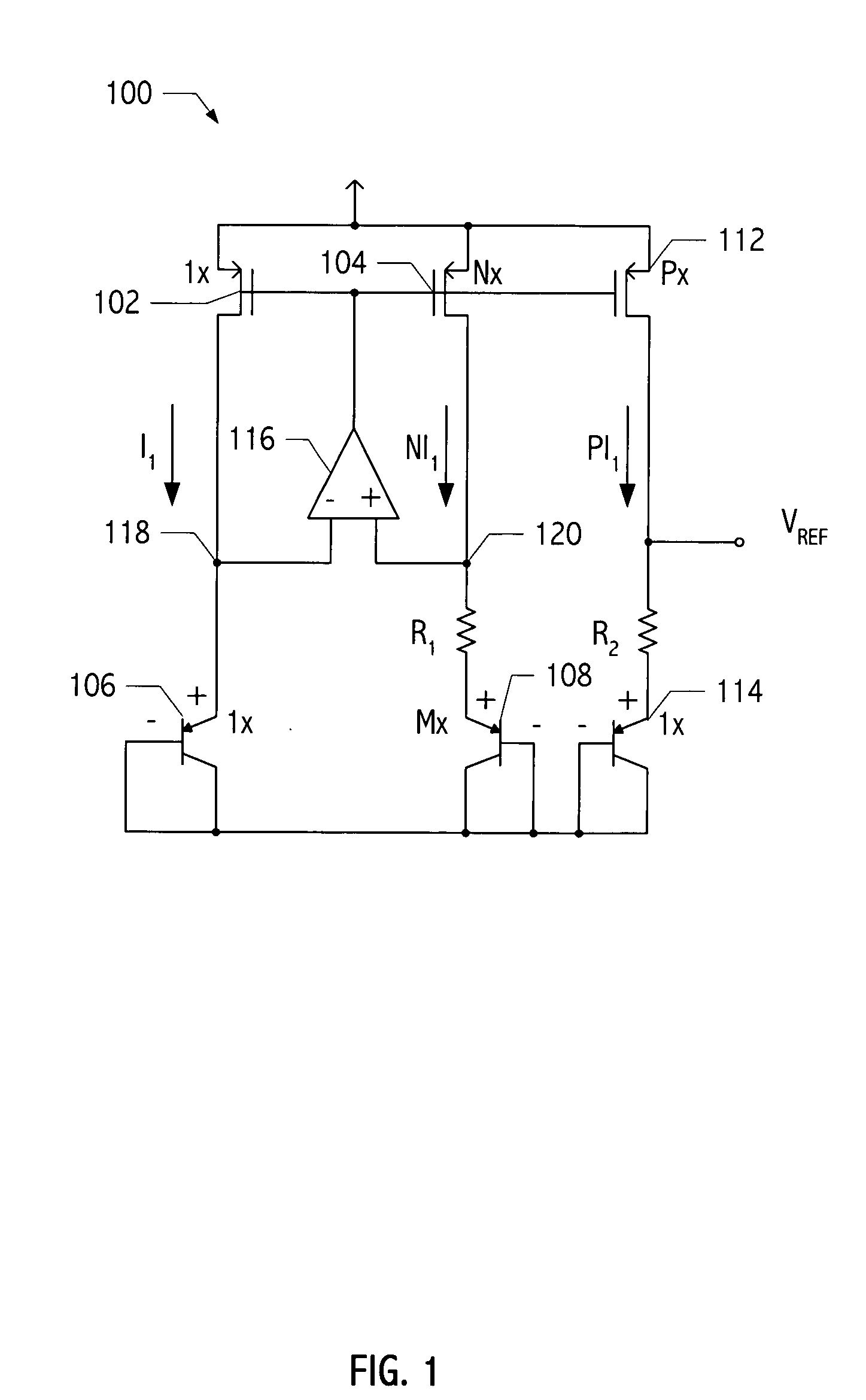Voltage reference generator circuit using low-beta effect of a CMOS bipolar transistor
- Summary
- Abstract
- Description
- Claims
- Application Information
AI Technical Summary
Benefits of technology
Problems solved by technology
Method used
Image
Examples
Embodiment Construction
)
[0017] A typical voltage reference circuit (e.g., voltage reference generator 100 of FIG. 1) is designed to provide a temperature stable reference voltage (i.e., VREF). In general, voltage reference circuits take advantage of two electrical characteristics to achieve the desired VREF: the VBE of a bipolar transistor is nearly complementary to absolute temperature, e.g., VBE=(−1.5 mV / °K*T+1.22)V, and VT is proportional to absolute temperature, i.e, VT=kT / q.
[0018] A voltage proportional to absolute temperature (i.e., a ptat voltage) may be obtained by taking the difference between two VBES biased at different current densities: Δ VBE=VTln(J1J2),
where J1 and J2 are saturation currents of corresponding bipolar transistors. Accordingly, voltage reference circuit 100 includes a pair of pnp bipolar transistors (i.e., transistors 106 and 108) that are connected in a diode configuration (i.e., the collectors and bases of these transistors are coupled together) and coupled to ground. ...
PUM
 Login to View More
Login to View More Abstract
Description
Claims
Application Information
 Login to View More
Login to View More - R&D
- Intellectual Property
- Life Sciences
- Materials
- Tech Scout
- Unparalleled Data Quality
- Higher Quality Content
- 60% Fewer Hallucinations
Browse by: Latest US Patents, China's latest patents, Technical Efficacy Thesaurus, Application Domain, Technology Topic, Popular Technical Reports.
© 2025 PatSnap. All rights reserved.Legal|Privacy policy|Modern Slavery Act Transparency Statement|Sitemap|About US| Contact US: help@patsnap.com



